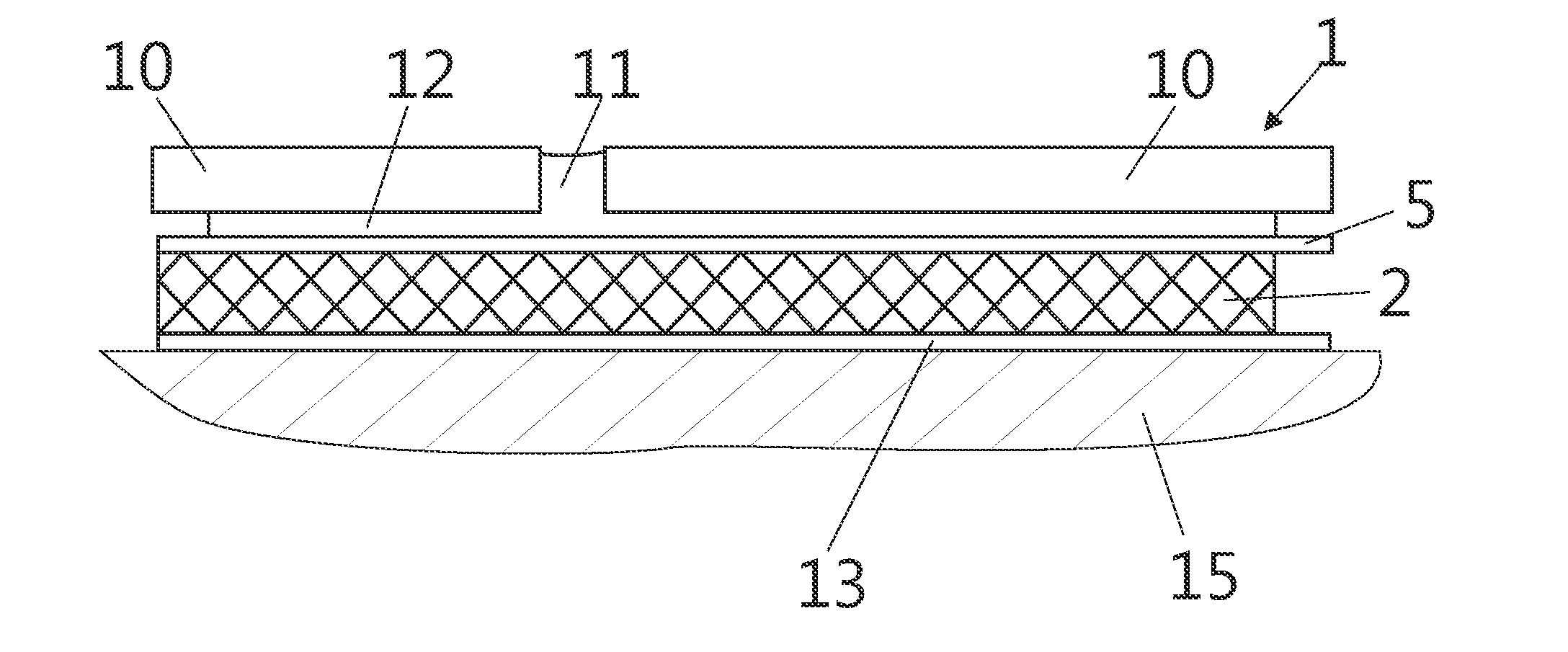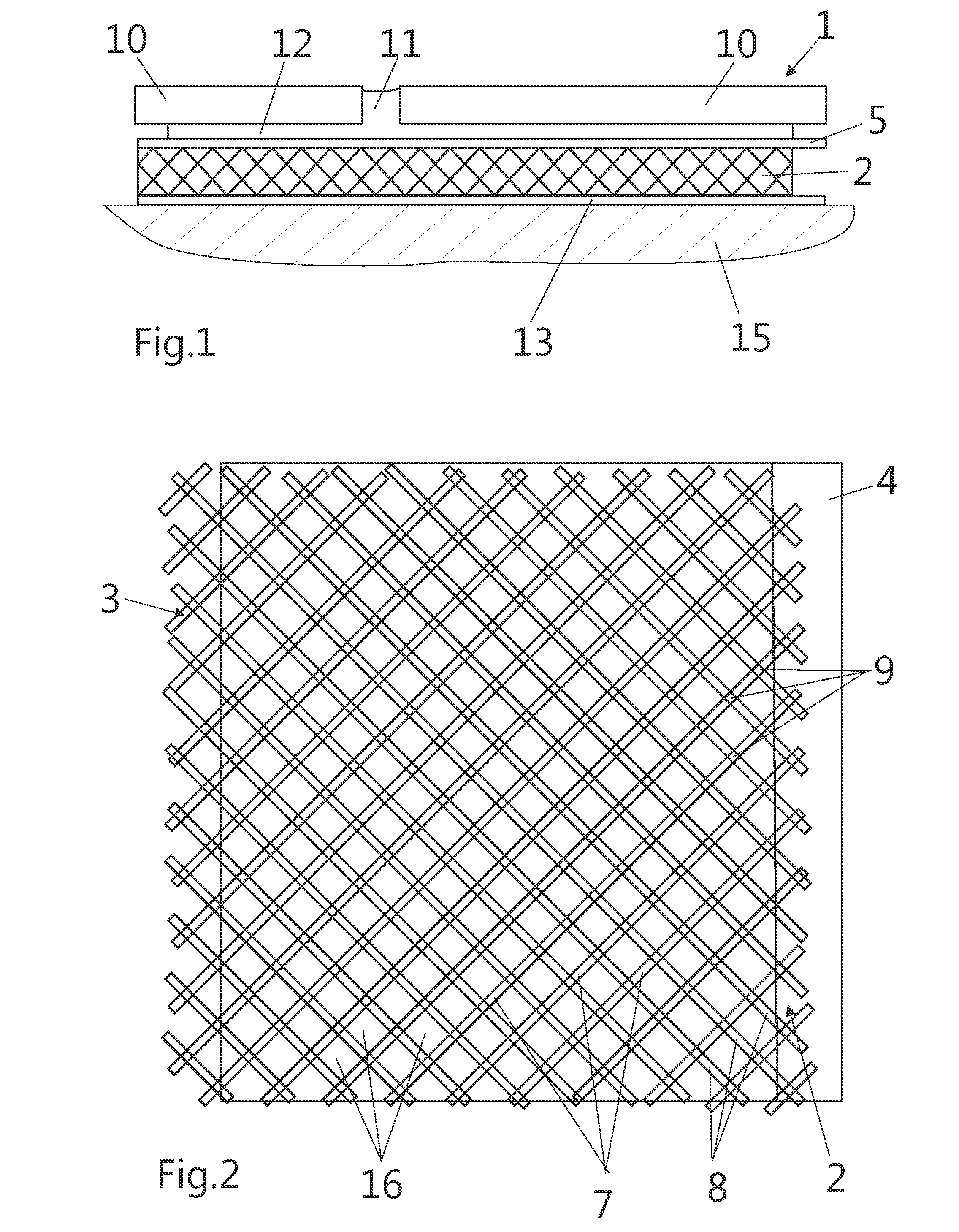Combined decoupling and heating system
a heating system and combined technology, applied in the direction of carbon-silicon compound conductors, organic conductors, conductive materials, etc., can solve the problems of unsatisfactory reduced durability period of such coverings, and high renovation costs, so as to improve mechanical load capacity of tiling and decoupling system, improve the service life, and improve the effect of service li
- Summary
- Abstract
- Description
- Claims
- Application Information
AI Technical Summary
Benefits of technology
Problems solved by technology
Method used
Image
Examples
Embodiment Construction
[0029]FIG. 1 shows a sectional side view of the layer structure of a combined decoupling and heating system 1 according to one embodiment of the invention, while FIG. 2 shows a top view. The decoupling and heating system 1 is shown in the installed condition on a substrate 15, for example cement screed or the like, where tiling consisting of tiles 10 that has been laid in tile mortar 12 by applying the thin bed method can be recognized above the decoupling and heating system 1 and where the joints 11 between the individual tiles 10 are also filled with tile mortar 12.
[0030]The decoupling and heating system 1 according to one embodiment of the invention has on its bottom side a nonwoven layer 13 for placement on the substrate 15. An anchoring layer 2 consisting of a lattice-like structure, which will be explained later, is connected to the nonwoven layer 13 above the nonwoven layer 13. The connection can be made, for example, by gluing or welding in a basically known manner dependent...
PUM
| Property | Measurement | Unit |
|---|---|---|
| thickness | aaaaa | aaaaa |
| thickness | aaaaa | aaaaa |
| voltages | aaaaa | aaaaa |
Abstract
Description
Claims
Application Information
 Login to View More
Login to View More - R&D
- Intellectual Property
- Life Sciences
- Materials
- Tech Scout
- Unparalleled Data Quality
- Higher Quality Content
- 60% Fewer Hallucinations
Browse by: Latest US Patents, China's latest patents, Technical Efficacy Thesaurus, Application Domain, Technology Topic, Popular Technical Reports.
© 2025 PatSnap. All rights reserved.Legal|Privacy policy|Modern Slavery Act Transparency Statement|Sitemap|About US| Contact US: help@patsnap.com


